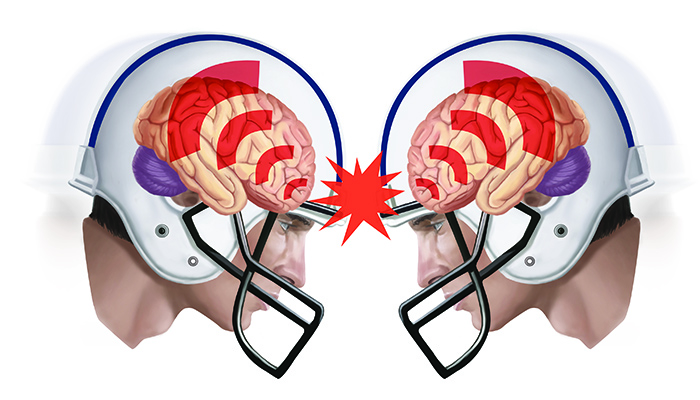Do helmets protect against concussion?

Before describing how helmets work and what they’re capable of, it’s important to understand how injuries can result from head impact. A blow to the head can cause the brain - which has a texture like soft tofu - to move back and forth (translational movements) or rotate and twist on itself (rotational movements).
In translational (back and forth) movements, the brain crashes against the skull, potentially even rebounding in the other direction and receiving a second impact with the opposite side of the skull. The damage is done by direct impact and is much like bruising. In rotational movements, as occurs when the head is struck at an angle, the brain itself twists, causing damage as neurons rub against each other in a shearing fashion.
Helmets more effective against severe TBI than concussion
Hard helmets protect reasonably well against translational movements and the impact injuries they cause, significantly reducing the risk of skull fractures and bleeding inside the skull – intracranial bleeding.
They are far less effective against rotational movements and it’s these that researchers believe are responsible for most concussions. This means that a helmet may protect the head better against severe TBI, which is caused by translational forces, than against concussion.
Why is this the case? Helmets are designed mainly to dissipate force. Most sports helmets consist of a hard outer shell and an inner foam layer, normally of polystyrene. The hard shell spreads or dissipates the impact force over a larger area.
Meanwhile the foam inner section also reduces the peak impact by extending the distance of head deceleration – meaning that it takes longer for the head to slow down, which makes the movement less abrupt. The foam layer also crushes and deforms, which absorbs as much of the remaining energy as possible.
While these factors decrease the level of the impact force, they do little to address rotational forces caused by head movement and any concussion this might cause. There is no evidence that the soft headgear players in some Australian football codes wear protects against head injury.
Many current attempts to improve helmets still focus on decreasing impact by using new materials, or on developing different foam and shell arrangements. However, the growing concussion crisis has led some researchers to try to limit rotational forces as well, with helmet manufacturers now looking to incorporate elements that slide against each other upon impact.
Helmets can't stop all concussions
Helmets, of course, are good for protecting against brain injuries. But they don’t do a good job against all types of head impact. Different impacts cause different head movements, and different head movements result in different injuries.

